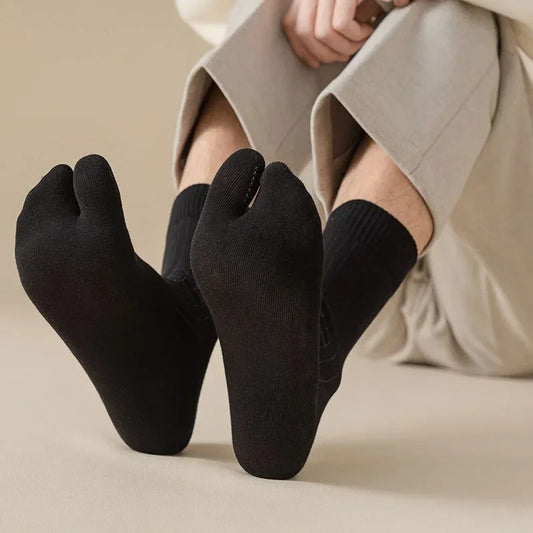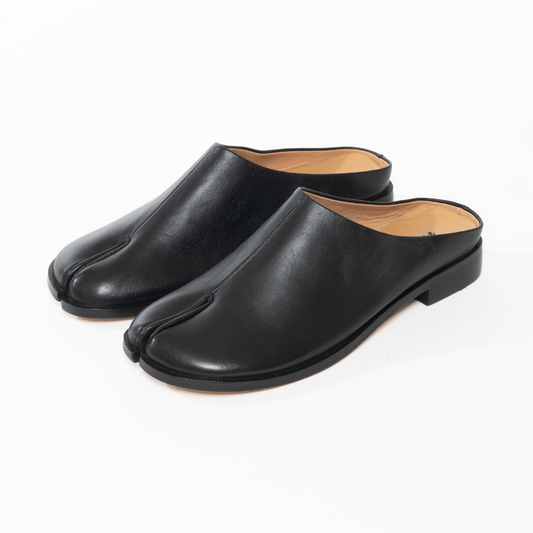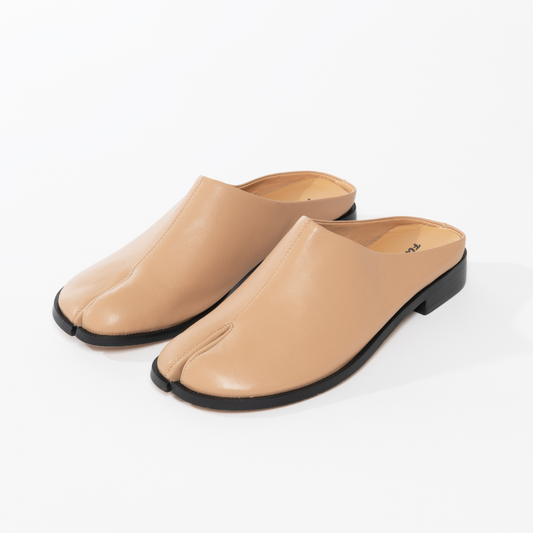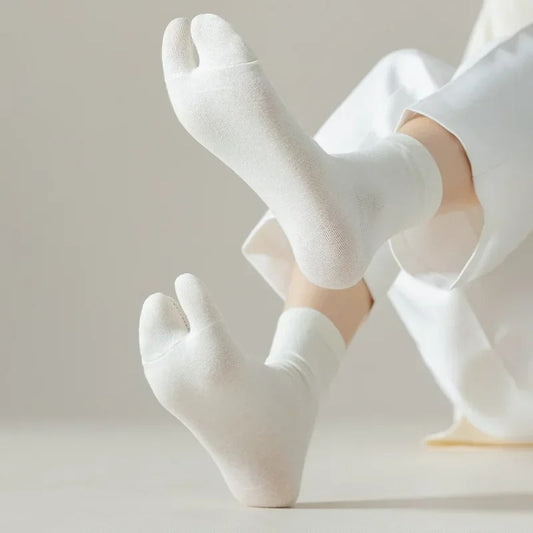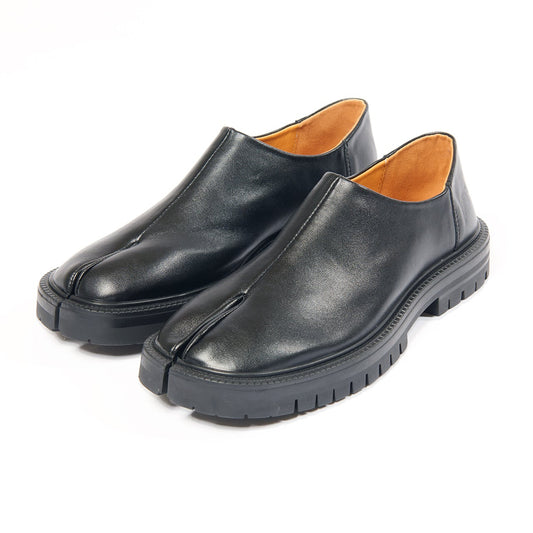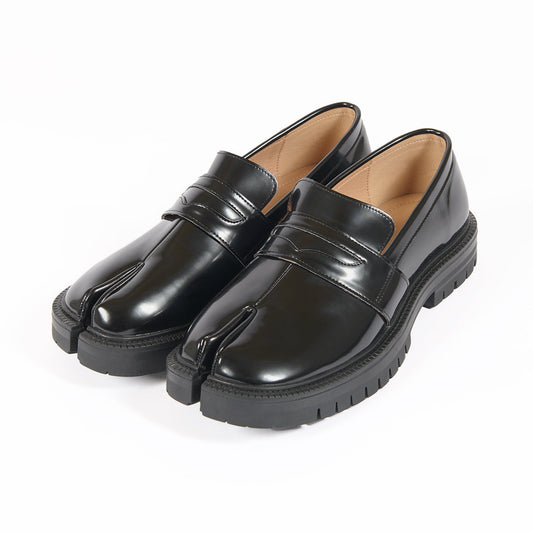Contemporary Japanese Fashion: How to Embrace the Style in 2025 ?
Japanese fashion has always held a unique place in the world of international style. In 2025, it continues to fascinate with its ability to reconcile tradition and innovation, local culture and global trends. From the vibrant streets of Harajuku to the runways of Tokyo, Japan asserts a distinctive style, rich in meaning and expression. In this article, discover the keys to contemporary Japanese fashion: essential pieces, dominant styles, and how to incorporate iconic elements like tabi into your own wardrobe.
What Is Japanese Fashion Today?
A Unique Identity Between Tradition and Modernity
The strength of today’s Japanese fashion lies in its ability to blend seemingly opposite worlds. Ancient references like the kimono or haori are often reimagined in modern materials, and stand alongside ultra-contemporary streetwear influenced by pop culture, animation, and the digital realm. This mix creates a visual language that is at once identity-driven, functional, and artistic.
What Sets Japanese Fashion Apart from the Rest of the World
Unlike global trends that are often short-lived, Japanese style emphasizes the intention behind each garment: the cut, the texture, the space given to the body. It values durability, creativity, discretion, and attention to detail. While Western fashion tends to follow rapid cycles, Japan favors slow, sometimes almost philosophical, evolution in clothing.
💡 Good to know: In Japan, fashion is often seen as an extension of the mindset—not just an outward appearance.
Dominant Styles in 2025
Japanese Streetwear: Harajuku, Shibuya, and Tokyo Chic Influences
Harajuku remains a hub of urban style. Young Japanese people take global streetwear codes (oversized hoodies, sneakers, graphic prints) and reinterpret them with a personal, narrative, and often theatrical touch. Influences from K-pop, manga, and retro vintage come together to create bold, fluid, and striking looks.
Japanese Minimalism: Simplicity, Volume, and Neutrality
In contrast to the exuberance of streetwear, Japanese minimalism is gaining appeal. It is based on neutral colors, natural fabrics, generous volumes, and understated silhouettes. Inspired by wabi-sabi and zen aesthetics, it promotes elegant simplicity, practicality, and quality over quantity.
Reimagined Tradition: Modern Kimono, Haori, and Tabi
Many Japanese designers incorporate traditional elements into modern outfits. The kimono becomes a jacket, the haori is worn over jeans, and tabi are transformed into fashionable accessories or hybrid shoes. This fusion of past and present embodies the spirit of contemporary Japanese fashion.
Must-Have Pieces in the Modern Japanese Wardrobe
Tops and Jackets: Sukajan, Urban Haori, Oversized Hoodies
The top half of an outfit is a key zone of expression in Japanese fashion. Sukajan (embroidered bomber jackets with military inspiration), haori reinterpreted in technical fabrics, and oversized sweatshirts with graphic messages are in high demand. They allow for effortless layering and storytelling through style.
Bottoms: Wide Pants, Long Skirts, Straight Silhouettes
Today’s Japanese pants break away from Western norms. Carrot-cut pants, long skirts, and wide-leg designs dominate the streets and runways alike. The focus is on comfort, fluidity, and harmony with the body. High waists and flowing fabrics shape the silhouette without constraining it.
Essential Accessories: Tabi, Textile Bags, Symbolic Patterns
Accessories play a central role: knotted fabric bags (furoshiki), reinterpreted obi belts, and traditional Japanese motifs either embroidered or printed. And of course, tabi—adding an instantly recognizable and culturally rich touch to any look.
💡 Good to know: Japanese accessories are not merely decorative—they often carry spiritual or symbolic significance through their patterns or materials.
Why Are Tabi Trending Again?
A Historic Item Turned Urban and Avant-Garde
Originally worn with traditional sandals, split-toe tabi socks are now available in modern, urban, and practical versions. Their resurgence reflects a broader trend: a return to meaningful fashion, a renewed focus on textile heritage, and the exploration of new bodily sensations.
How Japanese Brands Are Reinventing Tabi
Brands like Sou•Sou, Marugo, and Tabio work with artisans to craft tabi in cotton, leather, or technical fabrics—sometimes waterproof or styled like sneakers. Others, such as Maison Margiela, have even launched iconic tabi boots that became fashion staples in the West. The result: a historic garment turned high-fashion object.
How to Wear Tabi Today: Tips and Inspiration
Tabi pair beautifully with wide-leg pants and a haori jacket, or with a flowy dress or structured shorts. They can be subtle (in white or black) or bold (with patterns and vibrant colors). Their unusual shape draws attention, but their comfort makes them perfect for daily wear.
Our designs blend tradition and innovation: organic cotton, flexible soles, and designs inspired by Tokyo streetwear.
Discover our exclusive collection of Japanese tabi socks
How to Incorporate Japanese Fashion into Your Personal Style
Start with a Statement Piece: Tabi, Haori Jacket, Japanese Motifs
Begin by introducing a standout piece into your wardrobe: a haori jacket, a Japanese embroidered motif on a sweatshirt, or a pair of tabi. These items work well in both minimalist and bolder outfits, adding cultural depth without overwhelming the ensemble.
Experiment with Loose Fits and Layering
Thoughtful layering lies at the heart of Japanese style. Try combining a long T-shirt with an oversized shirt and a cropped jacket. Play with volume, natural fabrics, and structured cuts to create a fluid, intentional, and personal aesthetic.
Draw Inspiration from the Seasons and Japanese Art
Seasonality is key in Japan. Colors, patterns, and fabrics change with the months. Drawing from spring flowers, the summer sea, or autumn maples allows you to build a living wardrobe that reflects nature and the passage of time.
💡 Good to know: In Japan, clothing is often chosen not only according to the season but also for the spiritual meaning of colors: white for purity, blue for wisdom, and red for energy.
